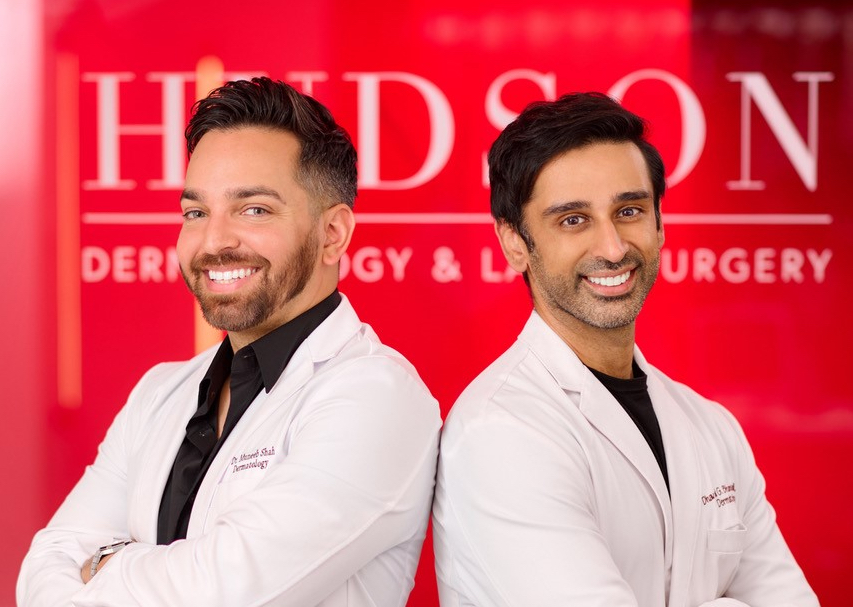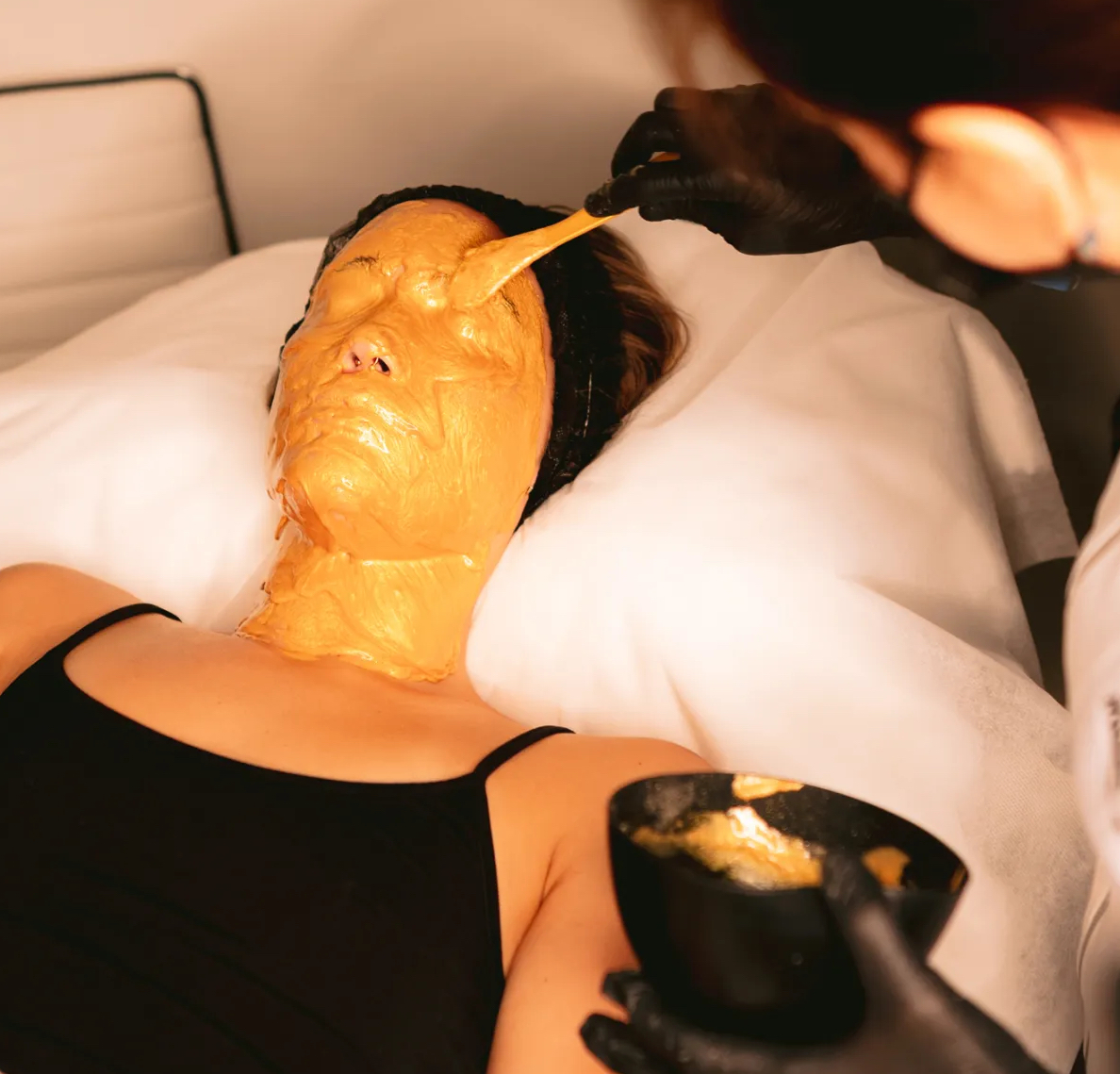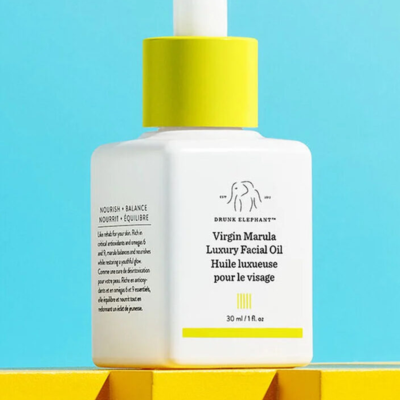
Celebrity Derm Dhaval Bhanusali And TikTok Derm Muneeb Shah Partner At NYC Medical Practice, Set Out To Make Facials More Science-Driven
After sliding into each other’s DMs, Dhaval Bhanusali, the dermatologist behind Hailey Bieber’s brand Rhode who’s worked with Martha Stewart and Yankees players, and Muneeb Shah, who’s known as DermDoctor on TikTok, where he has 18.2 million TikTok followers, bonded over their nonconformity. (Neither Shah nor Bhanusali recall which of them sent the first message.) They not only want to be dermatologists, they want to change the dermatology profession for the better using technology and social media.
“I can only see the patients within my four walls, but technology allows us to expand beyond the four walls,” says Bhanusali. “Dr. Shah, he can’t tell every patient, ‘This is how you can apply a moisturizer or educate them on the basic principles of ingredients,’ but social media creates this larger distribution where you can educate.” He adds, “Deviating from the norm sometimes is a lonely and scary process because in medicine we’re taught to be very structured, but my genuine belief—and I think we both share this—is that, in order to do great things, you have to get out of your comfort zone.”
Now, Shah has left his comfort zone in Charlotte, N.C., where he’s been a partner at Fora Dermatology, to join Bhanusali’s Manhattan medical practice, Hudson Dermatology & Laser Surgery. The move cements an already blossoming professional relationship between Shah and Bhanusali encompassing a number of projects, including Aire Health, a drop-ship platform turned to by 2,100-plus dermatologists and 600-plus dermatology residents for recommending products from brands the likes of PCA Skin, Sente, Heliocare, Bioderma, RoC, Skinfix, Neutrogena and EltaMD, and Aesthetica Skin Lab, a bespoke facial service incorporating advanced skin testing, lasers and electroporation instruments.
Beauty Independent talked to the two dermatologists about how they connected, their vision for Aesthetica Skin Lab that Bhanusali describes as cultivating a “treatment idea as opposed to more of a treat,” the difficult realities of operating a dermatology practice today, trends they’re watching, and the rise of science-backed beauty.
How did you originally come together?
Shah: I graduated from dermatology training after Dr. Bhanusali did. The way that medicine is structured is that you are really expected to follow this very cookie-cutter pathway of going through medical school residency, finding a job in dermatology and working in clinic, which is an incredible career, but very few people stray from it.
I used to prescribe Skin Medicinals, the compound company he created, and I posted about it a few times on social media. By accident, I started growing on social media, and Dr. Bhanusali had seen my videos mentioning Skin Medicinals. I was deviating from the normal path of dermatologists not being on social media. I was one of the early people that started over three years ago. So, we ended up reaching out to each other. Who reached out to who is still debated.
It was nice because, when you’re on social media and you have millions of followers, a lot of people reach out to you, but you really never know what their intentions are. A lot of people reached out to me, but they always wanted me to promote their product.
But, when we ended up talking, he’s like, “Hey, I know what you’re going through is challenging because you’re doing something that people haven’t done before, you’re going to face a lot of criticism. So, if you ever need someone to bounce ideas off of, I’m here for you.” I was like, “I’ll take you up on that.” We just hopped on a call, and we’ve been good friends ever since.
Bhanusali: We have very similar values, similar upbringing, similar family. When principles align, I think you have the basis of something truly special. We started working on projects together, and it’s evolved since then to be more formal. We’re very thankful that he’s coming to New York and part of the Hudson Derm family.
What’s Aesthetica Skin Lab?
Bhanusali: Dr. Shah and I both sometimes worried about the facial process being a commercial thing where you go in, and it’s almost like a restaurant menu where you’re picking random things. A lot of times with our patients, especially for special events, we’d coordinate with their facialists, do our best and hope everything would work out. We’re like, let’s add a layer of science to this and do it our own terms.
So, we created this thing where we do objective clinical measurements, we do your hydration levels, pigment, vascularity, all these different things, and then we work with the aesthetician, and we craft a unique facial for that patient, and sometimes we laser between. For example, sometimes we use lasers to heat up the dermis so that we know we can get better penetration of active ingredients, but also treat the skin itself.
The rule we have is we’re not as concerned about how you look immediately after, which is I think what most facials are more interested, but a week later, two weeks later, three weeks later. That’s the basis for where science plays its role.
The cool thing about Aesthetica is we haven’t really marketed it or anything. It’s been for our own patients, but we have had so many inbounds coming in from non-patients. We started with limited appointments. We do drops the first and 15th of each month for people to sign up for, and they usually go in a few minutes.
We’re doing very unique collaborations. We’ve done one to commemorate the SI swimsuit launch. We have a couple other ones we’re announcing soon, and you’ll see some really fun crossovers. It allows us to be a bit more creative than typical doctors.
My genuine belief is that the next phase in beauty is going to be around science. I think clean skincare had its moment. It was not necessarily defined very well, and there’s a lot of confusion over what it is. I don’t think with science there’s as much confusion. It has to actually work for people to want to purchase it. Both of us love that because it elevates the science, it elevates the dermatologist’s opinion as the true influencer.
With Aire, what we’re doing is we’re curating a platform where the dermatologists are in charge of what they recommend, and it allows an opportunity for patients to receive things at a discounted price. We’ve built this bridge where the doctor can have access to all these products because we do write the recommendations—30 to 50 patients a day, two to three recommendations—and we’re digitizing the process, which enhances compliance. It allows brands to have better exposure to doctors and inevitably the patients as well.

How’s your content evolving?
Shah: When I started on social media, it was totally different game. I just did a masterclass yesterday with 1,200 derms learning about how to do social media. During that masterclass, I was showing videos from when I first started to now because I think, if people see my content now, they think, well, in order to do social media, you need an expensive camera and crystal clear audio. When I first started, it was awful production value, but people listened because they got value from what I was putting out there.
If you lead with education, you can still do well on social media, but I think the expectation of what people want to see on social media is changing every day—and that’s minor changes, the speed, how you intro the video, what type of conversations people want to have. There’s been a shift more towards procedural dermatology where there was a big focus on skincare during the pandemic where all people wanted to talk about was ingredients.
Now, people are more interested in the complete formulas. There was an interest in brands like The Ordinary and The Inkey List that were single ingredient, and now people are looking for more complex formulas. There was an interest in maybe Botox and fillers, and now people are more interested in lasers and seeing what laser procedures look like. I’m literally week to week changing my content because you really do need to have your finger on the pulse in order to create content that’s going to resonate with a larger audience.
What advice do you have for brands wanting to partner with you?
Shah: Dr. Bhanusali doesn’t do any branded content where he posts for brands. I started doing it when I was a resident, and I’ve scaled down quite a bit. I stick to a handful of brands now. I think there’s a lot of different ways to approach it that work and don’t work. Especially if it’s a newer brand, you have to lead with what your value is, why you’re different, why you should work with this person and have a really collaborative effort.
But, for me, the approach doesn’t matter as much as products. My litmus test is whether or not I recommend it to my mom. I evaluate price point, the ingredients that are in it and the ingredients that are not in it, how available it is, how accessible it is, positioning. It really doesn’t matter how big the offer is because the biggest offer I ever got I turned down for an eye cream that has fragrance in it that I would never recommend to my mom. It still feels like I got kicked in the stomach every time I think about that number.
What brand was it?
It was one of the big-box brands. It was a lot of money. I was a resident at the time, and my base salary then was $50,000 a year. So, anything that was even close to that was crazy, but I slept well at night knowing that I was recommending products I could feel good that, if someone got and used them, they would have the intended effect.
What’s your stance on fragrance in skincare?
Shah: I will at times use fragrance in my own skincare, but I will not recommend it to people because the challenge is that about 4% of people are allergic to fragrance. Say I get a million views on a video. Not everyone’s going to buy it, but let’s say 40,000 people got an allergic reaction to the product that I recommended. That’s a massive number of people. That would weigh heavy on me if I were do that.
So, I’ll mention products with fragrance, but I’ll always say, “This has fragrance,” but I won’t promote products that have fragrance in them, especially as an ad. Every derm is different. I’ll never judge anybody for deals they take because everyone has their own family issues, their own ethical guidelines.
For me, if you’re a derm on social media and you’re wearing the white coat, you’re now representing your profession. So, you’re not a regular influencer. There are a lot of people out there that they take the advantages of the white coat, but then they don’t take the limitations of the white coat with it, unfortunately. The limitations mean you can’t just be a beauty influencer that talks just about the products that you love because you’re saying, “I’m a dermatologist, and I’m recommending this product.”
You have to think about all the patients that come into your office with eczema and atopic dermatitis that have allergies, and what would you recommend to them? I’ve used the advantage of the white coat to get me further, and I have respect for that degree that I have to carry forward. When people see me, I may be the only dermatologist they’ve ever seen in their life. So, I have to embody what our profession does. That’s my metric, but not everyone’s going to be the same.

What’s exciting to you in the laser field right now?
Shah: Laser technology is just so incredible. We have acne lasers now, which I think are incredible. Accutane was really the only quote unquote cure for severe nodular cystic acne, but a lot of people experienced side effects. So, to have a laser that targets the oil glands specifically to eliminate acne, I think is an incredible development. There are picosecond lasers that can target pigment and can also target tattoos better than ever before. It’s not just the lasers we have, but how we use them.
Bhanusali: It’s that idea of cross-mixing lasers to get better results, one plus one equals three. That is the evolution that’s happening right now. I do a lot of scar work. The traditional dogma was to wait at least six months to a year before after any surgery or whatever it was to treat. We’ve shifted that to the faster, the better. So, a lot of these things are shifting.
How do you see the practice of dermatology changing, and how do your various projects interact with that?
Bhanusali: It’s a touchy subject. There are so many issues going on with dermatology. I think it’s becoming a lot more corporate. The costs are going up like crazy. The reimbursements are down, and inflation is going up. It creates this unsustainable pattern that unfortunately gets worse year by year. I’m pretty active on the advocate side. For example, we met with Sen. Schumer recently to talk about the issue with lidocaine shortages and other medications we use with patients.
As doctors, we realized that at some point we’re going to have to take things matters into our own hands. Aire is a by derm for derm solution to start creating better industry relationships. How do we negotiate better rates for lasers, for chairs, for gauze, for anything and everything? We’re small businesses at the end of the day. You never want to walk into a room and have anything other than the best interest of the patient in your mind, but there’s so many stressors around it.
Shah: I think the public is not necessarily aware of the reckoning that’s going to occur over the next five years. As a practice owner seeing the P&L every month, it’s not about the physicians making a ton of money anymore. It’s really about staying afloat in the current environment. The way that reimbursements come into a standard medical practice is that you bill insurance, and when you bill insurance, they give you a certain amount back for what you did. Every year, it gets cut, and the cost of running these practices goes up every year because your employees’ costs are going up.
They’re paying $30 an hour at Target, so our medical assistants want to make more money as well. Otherwise, they’re going to leave, and we need good people taking care of our patients. Then, you have the cost of lidocaine going up, you have the cost of electricity, the cost of rent going up, and your reimbursable things go down.
For a long time, the way that this was solved was that people just saw more and more patients. So, when we were growing up, there were dermatologists seeing 15, 10 patients a day, and they were still making the same amount of income. Now, you have dermatologists that will see 50 patients in a day. You basically reach a breaking point of efficiencies where you can’t see more than that. Once you can’t see patients anymore, but the cost of the practice keeps going up and the reimbursements keep going down, you basically reach a zero-profit situation.
What’s happened is you have private equity companies that come in and they say, “We’ll buy your practice. We’ll bring down the cost of everything because we negotiate better with insurance companies.” So, as a single practice dermatologist or practice dermatologist led by several dermatologists, it becomes less and less possible to run a practice.
Then, what you have is you have businesspeople coming in and running practices and all the data shows that, when a physician runs a practice or even a hospital, the outcomes for patients are better. So, we’re at this challenge point where, how do we get the power back to be able to run practices as physicians?
I think Aire is meant to help solve a lot of that. To Dr. Bhanusali’s credit, the way his mind works is we have to start with the problem and then try to create the solution through technology. And the solution is basically how do we get all these small practice dermatologists on a single platform to negotiate better rates for products, for services, to bring in more profit and revenue for the practices so that they continue to be sustained and not have to join one of these bigger groups.
Do you think we should broaden our spectrum, pun intended, of sunscreen filters in the United States?
Shah: We haven’t updated the FDA monograph on sunscreen in 30 years. Technology in Europe and South Korea is incredibly more advanced than ours. I think that chemical sunscreen filters are safe for the most part. I personally avoid oxybenzone due to overwhelming data on allergenicity, but most of the sunscreen filters are safe, and I recommend them and use them all the time.
The challenge is that there’s better options out there, and we know it. A lot of people who are really in tune with skincare buy their sunscreens from overseas now. If there are problems with it, there’s no recourse within the United States for that purchase because they’re not legally regulated in the United States. We certainly need to open this up. It’s long, long, long overdue that we changed the sunscreen laws in the country.
Are there any product formats or ingredients that you are really looking forward to making bigger splashes in the market?
Bhanusali: There’s a lot more interesting education around what you should be using. Most times people just bought a moisturizer or serum, but now people are understanding about their barriers or understanding about, OK, you can’t maybe shrink your pores, but these are different things you can do to enhance the appearance or make it look like they look a bit smaller in size. I think we’re going to start moving towards novel ingredients. There’s a company called Mother Science that raised recently with a novel ingredient for hyperpigmentation. We’re hopefully going to enter a cool new innovative age.
Shah: There’s a lot of trendy things that come and go. Different forms of peptides are really hot right now. Which ones will stand the test of time? I like to lean into the ingredients that have 30, 40 years of data, but we don’t always have time on our side. I talk about retinol all the time just because it has an overwhelming amount of data. For most people, just sticking to the basics, you’re going to have the best results, but there is a lot of exciting stuff coming in the biotech world. Bold, which is L’Oréal’s venture arm, invested in a company called Debut, and it’s essentially building skincare ingredients from the ground up.

What are you focused on going forward?
Shah: Dr. Bhanusali is funny. He’ll call me at 11 p.m. and be like, “I got this great idea,” and I’m always like, “Yeah, but we have all these other things that we have to do.” We’ve worked so long and so hard on Aire, and it’s launching now really with all the brands finally on it. We just put Neutrogena on Aire. I think we’re their first drop-ship partner ever. So, that’s going to be a big focus for us over the next coming weeks and Aesthetica Skin Lab. I think we can disrupt the way we do facials.
Bhanusali: Dr. Shah is correct. I do call him at 11, sometimes even later, with random ideas. I always joke that one little idea, one little spark can lead to who knows what. We’re both pretty young, and we have a bit too much energy right now. I’m sure that’ll slow down at some point, but the beautiful thing is that, when you have a colleague and a partner who has that same vision, it’s like, why not? Why can’t we do more things?





Leave a Reply
You must be logged in to post a comment.